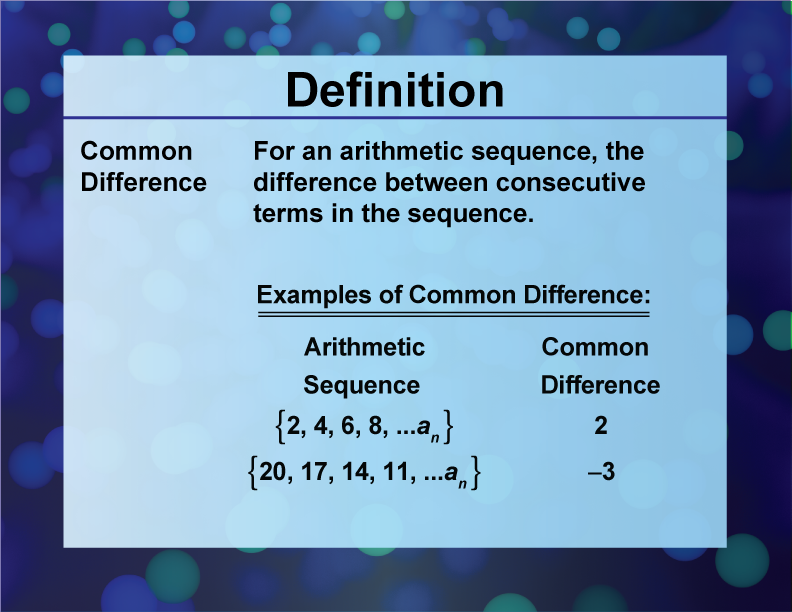
Display Title
Definition--Sequences and Series Concepts--Common Difference
Display Title
Common Difference

Topic
Sequences and Series
Definition
The common difference is the difference between consecutive terms in an arithmetic sequence.
Description
The common difference is a key concept in arithmetic sequences, representing the consistent interval between consecutive terms. This concept is fundamental in understanding linear patterns and is widely used in various mathematical applications.
In real-world applications, the common difference is used in financial calculations, such as determining the amount of regular deposits or withdrawals in savings accounts. It is also used in scheduling and planning where tasks occur at regular intervals. Algebraically, if an is the nth term of an arithmetic sequence and d is the common difference, then
an = a1 + (n −1 )d
Understanding the common difference is essential for math education as it helps students recognize and analyze linear patterns. It lays the groundwork for more complex topics in algebra and calculus, and aids in developing problem-solving skills.
For a complete collection of terms related to sequences and series click on this link: Sequences and Series Collection
| Common Core Standards | CCSS.MATH.CONTENT.6.SP.B.4, CCSS.MATH.CONTENT.HSF.IF.A.3, CCSS.MATH.CONTENT.HSF.BF.A.2, CCSS.Math.CONTENT.HSF.LE.A.2 |
|---|---|
| Grade Range | 6 - 9 |
| Curriculum Nodes |
Algebra • Sequences and Series • Sequences |
| Copyright Year | 2021 |
| Keywords | data analysis, arithmetic sequence, common difference, definitions, glossary terms, geometric sequence, common ratio |